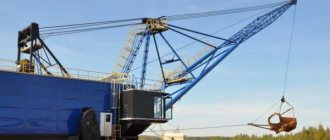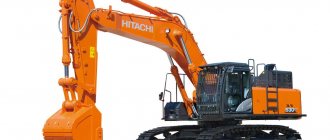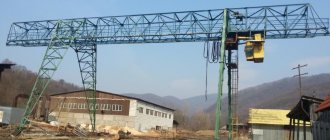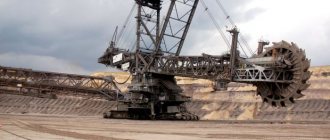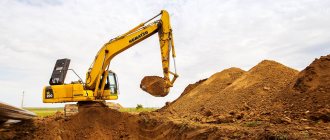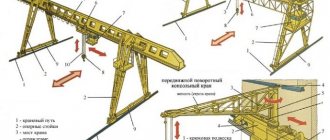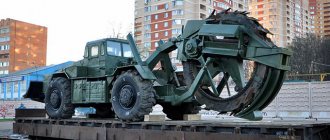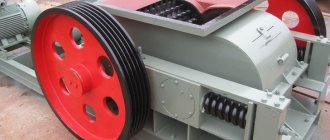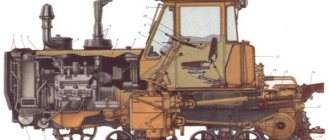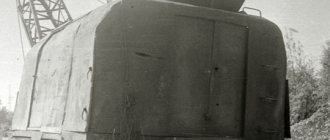The crawler excavator is a highly efficient and most popular earth-moving equipment. It has a standard design, including a chassis, a cabin and a working element - a bucket, with the help of which soil is excavated. A distinctive feature of this type of excavator is the caterpillar track, due to which the machine moves around the construction site. This special equipment is also distinguished by its versatility and high maneuverability. These advantages, together with ease of operation, durability and ease of maintenance, make crawler excavators the optimal choice for any industry where large-scale excavation work needs to be carried out with maximum savings of time and labor resources.
Application area
The crawler excavator is indispensable for the construction industry. It is also actively used in the logging, agricultural, manufacturing and municipal sectors. A crawler excavator is in demand when carrying out road construction or emergency rescue work. Functional and design features, as well as a variety of additional equipment, allow this equipment to perform operations such as:
- development of pits for the construction of permanent buildings,
- arrangement of trenches for pipelines and communications,
- construction of ditches and embankments near roads,
- development of rocky soils,
- loosening frozen or particularly hard soil,
- cleaning water bodies from silt and other contaminants,
- demolition of buildings and other structures,
- loading and unloading of bulk materials,
- moving metal structures.
Technical specifications
The main working unit of a tracked excavator is the rotary platform. The operator's cabin, engine and boom with bucket are located here.
Workplace. The operator's cab is usually an all-metal structure reinforced with a safety cage. Almost all manufacturers install panoramic glazing (the windshield is often covered with bars), heating and air conditioning systems, and a sprung seat. This ensures operator comfort during operation.
Power point. As a rule, manufacturers equip their excavators with turbocharged diesel engines. The type of cooling is usually liquid, in combination with a pre-start system, this ensures that the machine starts even in severe cold. Diesel power depends on the type of excavator. Average power figures range from 250-400 horsepower.
Working equipment. In the basic configuration, tracked models come with an excavator bucket. If necessary, this element can be replaced with a hydraulic hammer, grab, pile driver, soil loosener or other equipment. The bucket is attached to the boom. This element can be regular or telescopic. Thanks to this, the digging depth of tracked vehicles can vary from 5 to 10 meters.
Advantages
The tracked chassis and other design features give special equipment of this type numerous advantages and make it an absolute leader in its segment.
- Increased cross-country ability. The equipment demonstrates stability when moving through rural areas, dirt roads, forest clearings and off-road conditions.
- Maneuverability. Crawler excavators can be deployed anywhere and can also move the working tool with a 360° rotation.
- Reliability . The machines withstand harsh climatic conditions and operate efficiently even under heavy loads.
- Versatility. The variety of attachments allows the equipment to perform different types of tasks - from digging trenches to loading materials.
- Sustainability . Tracked vehicles easily overcome difficult terrain, climbing the steepest slopes, and are reliably protected from tipping over.
Design features
Regardless of the manufacturer and year of manufacture, all crawler excavators in this line consist of the following elements:
- Undercarriage;
- Rotating platform;
- Power point;
- Operator's workplace;
- Transmission;
- Arrow;
- Handle;
- Excavator bucket.
The caterpillar propulsion system consists of metal tracks stretched over the support and drive rollers. The number of such rollers and the width of the track depend on the model and intended purpose of the excavator. The maneuverability of the vehicle and the pressure on the ground depend on this parameter.
The rotating platform mechanism is driven by a planetary gearbox; the force required for this is created by the standard hydraulic system. The platform is usually fully rotating, which allows the machine to perform a maximum cycle of work without moving around the construction site.
Classification
Modern models of crawler excavators have quite a lot of differences, although the main components are almost identical. The classification of equipment is carried out according to the following criteria.
By number of buckets:
- single-bucket – universal, suitable for work related to loading materials and digging soil;
- multi-bucket - specialized, used primarily for digging trenches and pits.
By engine type:
- electric – suitable for working in tunnels and other enclosed spaces;
- diesel - has more power and is used in open areas.
By drive of the working body:
- hydraulic – ensures the execution of two movements at once (digging, turning);
- mechanical – simple and reliable to use.
According to the shape of the bucket:
- straight shovel – capable of turning around when taking rock;
- a construction bucket is more spacious and durable.
By chassis type:
- normal – suitable for standard operating conditions;
- widened-elongated – ensures stability and off-road maneuverability.
Other Features
As for the engine, both diesel and electric options can be used. The drive of special equipment can be hydraulic or mechanical teak. The hydraulic drive often requires maintenance, since it bears most of the load.
Repair of excavator structural elements is carried out on site. To carry it out, you may need original Hitachi spare parts. But in general, this equipment belongs to the category of durable construction equipment, so repairs will have to be done infrequently.
Tools
The design of crawler excavators allows them to be equipped with various types of removable equipment. Instead of a standard bucket, the operator can independently install any necessary tools on the rotary handle. Most often, hydraulic hammers, grab jaws, ripper teeth, hydraulic drills, log grabbers, and hydraulic shears are used to equip crawler excavators. Also, pile driver masts and various hooks are often used as a replacement for a bucket. All this allows us to significantly expand the list of tasks that can be solved using just one piece of equipment.
Engines and workplace
Power plants are usually diesel, although there are excavators on the market equipped with electric motors. The engine is installed on a rotary platform, performance depends on the excavator model.
The cabin of special equipment is usually made in a soundproof version with panoramic glazing. This arrangement provides the operator with maximum visibility and a comfortable working environment. The controls are located inside, frame reinforcement and protection are provided in case of falling heavy objects.
Specifications
Each type of crawler excavator has a standard set of components: a running frame, a rotating platform, a cabin and a working unit with a handle and a bucket. Moreover, the models have special technical characteristics and functionality. In order for the equipment to be ideally suited to specific tasks, it is necessary to take into account such parameters as:
- dimensions,
- useful power,
- movement speed,
- total weight,
- type of tracked chassis,
- bucket design and capacity.
Main criteria and characteristics
Manufacturers produce equipment of different sizes, which determines the scope of application of the machines. According to their intended purpose, crawler excavators are of the following types:
- mine (compact models that move freely in confined spaces - tunnels, mines, etc.);
- quarry (oversized machines with a spacious bucket);
- overburden (chosen for mining and excavation from shallow depths);
- universal (used on construction sites - the most popular on the market).
The second classification criterion is the type of motor. Excavators have a diesel, electric or mixed type engine.
The unit can be a cyclic or continuous operation technique. When quarrying or construction work, the latter are more in demand. Depending on the possibility of movement of the platform (on which the engine, boom, and cabin are located), excavators are either fully rotating or non-rotating.
Features of the structure of the tracked undercarriage
Excavator tracks allow them to move confidently on any type of soil: loose, viscous, weak, marshy. They actually make special equipment all-season and universal for any region, thanks to which it effectively replaces other types of transport, the chassis of which is not capable of moving on extreme off-road conditions. At the same time, the tracked undercarriage is a complex system, including numerous units and components. The main mechanisms ensuring its operation are:
- drive sprocket - drives the belt;
- sloth – regulates the degree of tension of the caterpillar track;
- belt - a prefabricated element with tracks, lugs and shoes on a chain base;
- support roller - a cylindrical element that functions like wheels;
- support roller - a cylindrical product that prevents the belt from sagging in the upper part;
- chain - the main element of the track on which shoes and other parts are attached;
- bolts and nuts – secure the tracks to the chain.
During the operation of special equipment, some elements wear out quickly, while others retain their functionality longer. In any case, the owner needs to pay special attention to chassis maintenance.
If all the mechanisms of the excavator are driven by one engine, such a drive is called a single-engine drive. If in an excavator each mechanism (or group of mechanisms) is driven by a separate engine, such a drive is called a multi-motor drive.
In order to transmit movement from the engine to the working mechanisms, the following types of drives are used: – mechanical, when the movement is transmitted using shafts, gears, worm pairs, chain drives; – hydraulic volumetric, where the drive role is performed by a hydraulic pump, oil lines and hydraulic motors (or hydraulic cylinders); fluid circulates in the oil pipelines, transmitting energy from the pumps to hydraulic motors (or hydraulic cylinders) that set the working mechanisms in motion; – hydromechanical, in which a torque converter is used in combination with a mechanical transmission to transmit energy; – electric, used on excavators with a multi-motor drive in combination with a mechanical one; – mixed, consisting of two types of drives, for example mechanical and electrical.
Thus, excavators are classified: – according to the method of movement (floating and land); – by type of power equipment (diesel, carburetor, electric, diesel-electric, etc.); – by the number of engines (single-engine, multi-engine); – by type of drive (mechanical, hydraulic, hydromechanical, electrical); – according to the type of running gear of land excavators (tracked, pneumatic, rail-mounted and with walking running equipment).
Each group of excavators is distinguished by smaller features - size, power, purpose.
Single-bucket excavators are classified by purpose.
There are three main groups: – construction-universal – with buckets with a capacity of up to 3 m3, intended for excavation work; - quarry - with buckets with a capacity of 2 to 8 m3, designed for work in quarries for the development of ore and coal deposits; - overburden - with buckets with a capacity of more than 6 m3, intended for the development of the upper layers of rocks (overburden).
Single-bucket excavators are distinguished by their use with different types of working equipment.
Universal excavators are designed to work with various types of replaceable equipment; straight and backhoe, dragline, crane boom with hook suspension or grab, pile driver, etc.
Semi-universal excavators, in addition to the main working equipment, have one or two types of additional replaceable equipment (forward shovel, backhoe, dragline).
Special powerful excavators have only one type of equipment, for example a straight shovel.
Single-bucket excavators. A single-bucket universal excavator is a cyclic machine designed for excavating and moving soil and other materials using one type of working equipment with one bucket, and for performing loading, piling and other work with other types of replaceable working equipment.
Single-bucket excavators (Fig. 72) consist of the following main components: a running gear, a rotating platform with power equipment and main kinematic links, and working equipment.
Crawler undercarriage provides high cross-country ability and good stability during excavator operation.
In recent years, the production of excavators with a small bucket capacity on pneumatic wheels, which have great mobility and maneuverability when moving the machine from one object to another, has increased significantly. When working on soft soils, widened (or elongated) tracked equipment is used, the presence of which reduces the specific pressure on the ground and improves the maneuverability of the excavator.
Rice. 72. Diagram of a single-bucket excavator
Rice. 74. Scheme of operation of a straight shovel
The turntable is supported through rollers or a special (ball or roller) slewing device on the frame of the running device. The platform rotates in a horizontal plane relative to the chassis.
The angle of rotation of the running equipment in the horizontal plane determines whether the excavator can be full-rotary or part-rotary. The rotating part of a full-revolving excavator can rotate around its axis by 360°.
These machines have all power units, control panels, working mechanisms mounted on a rotating platform, and work equipment is attached.
The working equipment includes a set of excavator components with a working tool (bucket, hook, grab, etc.). The soil is developed with a bucket, and then moved to the unloading site into a dump or into a vehicle. Depending on the type of replaceable equipment, a rigid or flexible suspension of the working body is used. The nature of the work is determined by the working equipment: front shovel, backhoe, dragline, crane or grab.
The work cycle of the excavator is performed in the following sequence: digging the soil; moving the bucket filled with soil to the unloading site; unloading soil from a bucket into a dump or transport device; moving the bucket (rotating the platform) to the face; lowering the bucket in preparation for the next digging operation.
Indexing system for single-bucket universal excavators. The machine indexing system is the principle that is embedded in the structure of the index (brand) designating a particular excavator and reflecting its main characteristics. In 1968, a new indexing system for single-bucket universal excavators was introduced in our country. The excavator index has four main numbers, respectively indicating: the size group of the machine, the type of running gear, the design of the working equipment and the serial number of the model of this type. Thus, the excavator index contains information about its main characteristics. Thus, EO-3313 BTV is a universal single-bucket excavator, 3rd size group, on a pneumatic wheel running device, with a rope suspension of working equipment, 3rd model, which has undergone the second modernization, designed for work in the humid tropics.
A straight shovel is equipment designed to develop soil above the excavator parking level. A straight shovel with a mechanical drive (Fig. 74) consists of the following main components: boom lifting rope, bucket, handle, boom, saddle bearing. The handle is attached to the arrow by a saddle bearing, with the help of which the handle rotates in a vertical plane relative to the arrow and makes a reciprocating movement along the axis of the handle. When digging the soil, the bucket needs to go through positions -IV, shown in Fig. 74. The bucket is lifted by a lifting rope that goes around the head blocks. The pressure of the handle is carried out by a pressure mechanism, which also performs the reverse movement (return) of the handle. Universal construction excavators use rope and rack and pinion (pressure) mechanisms.
Pressure mechanisms are divided into independent, dependent, combined. A pressure mechanism is called independent if the pressure force can be increased or decreased regardless of the magnitude of the force in the lifting cable of the bucket, i.e. when the pressure movement of the handle with the bucket is made regardless of the lifting of the bucket. If the magnitude of the pressure force depends on the magnitude of the force in the lifting/many cable of the bucket and it is only possible to reduce the pressure, such a pressure mechanism is called dependent.
The pressure mechanism is called combined when the magnitude of the pressure force depends on the force in the lifting cable, but when the independent part of the pressure mechanism is turned on, it can be increased at will.
The straight shovel bucket consists of a body, a hinged bottom with a bolt and replaceable teeth. The teeth have a shank that tapers towards the end and fits into the visor socket. The teeth are held in their sockets by cotter pins to prevent them from falling out.
In recent years, straight shovels have been equipped with buckets with a semicircular front wall and a visor in the form of a scoop without teeth. A bucket of this design is much lighter and has minimal resistance when digging, which naturally increases the productivity of the excavator.
On straight shovel excavators, two types of handles are used: single-beam (internal type) and double-beam (external type). The single-beam arm runs inside the boom, while the double-beam arm runs outside. The handle can perform a reciprocating movement in the guides of the pressure shaft saddle, and also rotate together with the saddle bearing in a vertical plane relative to the pressure shaft. The design of the handle determines the design of the pressure mechanism. In excavators produced in the USSR, with a single-beam handle, a rope pressure mechanism is used, and with a double-beam handle, a ratchet pressure mechanism is used.
The boom of the straight shovel is made in the form of a welded structure made of sheet steel. The type of handle determines the design of the arrow. The boom can be double-beam with a single-beam handle and single-beam with a double-beam handle.
In the upper part of the boom, blocks are mounted on bearings, through which the bucket lifting rope and the boom-lifting rope pass. The lower end (fifth) of the boom is attached with fingers to the turntable and can be rotated when its angle of inclination changes. In the middle part of the boom there is a pressure shaft.
A backhoe is equipment designed to develop soil below the excavator parking level when digging pits, trenches, and excavations.
The backhoe (Fig. 75) consists of a bucket, boom, handle and two-legged stand. The bucket is fixed rigidly to the handle, pivotally connected to the upper end of the boom. When pulling the rope, the handle turns counterclockwise, the bucket crashes into the ground (position /; positions // and /// correspond to the transport position and unloading of soil from the bucket).
Rice. 75. Backhoe operation diagram:
The process of excavating soil with a bucket. The total excavation resistance R0 is overcome by the active force W0 directed tangentially to the bucket trajectory, which can be decomposed into the cutting and soil shear force WVi directed tangentially to the cutting edge of the bucket, and the pushing force WB directed normal to the cutting edge of the bucket.
The main parameters of hydraulic single-bucket excavators are: bucket capacity q, excavator weight C, engine power N, working dimensions of the excavator, as well as pressure and pump performance.
In hydraulic drives of excavators, constant-capacity pumps of gear and blade type (with a pressure of 12-16 MPa) and piston pumps with a pressure of up to 30 MPa are used, as well as variable-capacity pumps, mainly axial piston ones.
Pumps with constant performance are simple in design, but do not ensure full use of engine power in all modes. Variable displacement pumps provide more efficient and stable operation of excavators.
Performance and technological schemes of operation of single-bucket excavators. The productivity of single-bucket excavators is determined by many factors: the design of the machine, the level of organization of excavation work, the condition and quality of the soil and face, the qualifications of the operator and the technical condition of the machine.
In Fig. 77, b shows a diagram of the operation of a dragline during the construction of a subgrade embankment from the reserve. Excavation of soil is carried out on two grips; on one of them, the next layer of soil is poured and leveled with a bulldozer, and on the other, the freshly poured soil is compacted with soil-compacting machines.
Multi-bucket excavators. Multi-bucket excavators are earth-moving machines that have a multi-bucket chain or a rotary wheel with buckets rigidly fixed around the perimeter as a working tool. They are used: for road construction work; when digging pits, channels and trenches for laying pipes or for foundations, the installation, control panel, gearbox, and working element are installed on the running frame.
Note. Excavators EO-1621 (E-153A), EO-1627 (E-1514) are additionally equipped with bulldozer equipment: blade width 2000 mm, height 680 mm, cutting depth 500 mm. EO-ZZPB (E-302) excavators are equipped with dragline equipment with the following parameters: boom length 7500 mm, boom angle 40°, cutting depth 4450 mm, cutting radius 6500 and 10 100 mm, unloading height 3900 and 6300 mm, respectively, rad s unloading 6390 and 8300 mm, respectively.
The speeds of movement of the bucket chain and the machine must be coordinated with the capacity of the bucket and the depth of the face so that the bucket, passing the path of the face, can be filled by the time it exits.
Rotary trench excavators are used when laying main pipelines and trenches. The working part of these excavators is the rotor. Compared to chain trench excavators, rotary excavators have higher efficiency and greater productivity.
Cat® Crawler Excavators
Cat® equipment, developed by the American manufacturer Caterpillar, is among the leaders in its category. It allows you to perform a wide range of work quickly and at minimal cost. Simple operation and a variety of additional equipment make it a profitable purchase for an enterprise of any type of activity. Crawler excavators are available in standard and compact models of low, medium and high power. All equipment has high performance and safety indicators. Those looking to rent or buy a Cat® excavator can view the range and features of the machines here.
Cat 318 D2L
With improved handling, superior power and a comfortable work environment, the 318 D2L Hydraulic Crawler Excavator is a leader in its class. It is also versatile and easy to use, increasing productivity and reducing operating costs. The machine is equipped with an ACERT C4.4 engine, which has convenient electronic control and meets the environmental requirements of Tier 3, Nonroad Stage III, Stage IIIA EC. Together with a highly efficient hydraulic system, such a unit provides significant productivity with relatively low fuel consumption.
The design of the excavator is resistant to loads. The cabin offers comfort and excellent visibility, which helps improve operator productivity and ensure safety on site.
New generation Cat 320
The new generation 320 crawler excavator combines a number of modern technologies and developments: Payload, Grade Assist, Cat GRADE with 2D, etc. Together, this helps to increase operator productivity by almost half. The machines are equipped with updated cabs that are designed to provide the most comfortable working conditions (i.e. reduce fatigue) and excellent visibility (this is necessary for increased safety on site).
Excavators are equipped with modern engines and hydraulic systems that reduce fuel consumption by 20%. Together with extended periods between maintenance, this makes the operation of such equipment as financially profitable as possible. Users get an economical crawler excavator that can handle any task.
Cat 336D2 GC
Excavators of this model are distinguished by high productivity with economical fuel consumption, as well as great versatility - they can be used to solve various construction and production tasks. The machines are equipped with fuel-efficient ACERT C9 engines that meet the requirements of environmental standards of the USA, Japan, China and the EU. Together with an advanced hydraulic system, these drives help reduce operating costs, which is achieved by reducing fuel consumption. The reinforced design of excavators ensures their resistance to increased loads and the ability to operate stably in the most difficult conditions.
The spacious cab offers excellent visibility and the panel is designed to provide quick access to all controls. All standard maintenance procedures are carried out very easily, since basic technical components are easily accessible.
Cat 374FL
The 374FL Heavy Duty Excavator was designed to increase job productivity while reducing operating and maintenance costs. Thus, compared to the 374DL model, fuel costs are reduced by almost a third - by 28%. The vehicle is equipped with a C15 ACERT engine, which meets the emission standards of Japan, the USA, China, and the EU. This ensures stable operation and fuel efficiency of the engine.
The main sources of the excavator's power are the new ACS (Adaptive Control System) valve and an improved hydraulic system. The machine can quickly move tons of material being processed throughout an entire shift. The cabin has a high level of comfort and good noise protection. Thanks to the well-thought-out arrangement of control elements, all manipulations are carried out very quickly.
Hitachi crawler excavators
The Japanese engineering concern, together with the Italian company Fiat, produces three lines of excavator machines of compact, medium and heavy classes. Among them there is equipment capable of developing heavy, rocky soils, and performing dredging work in hard-to-reach places. The models produced are distinguished by:
- hydraulic system HIOS 3 - capable of increasing the speed of the bucket;
- six-cylinder Isuzu engine with direct fuel injection, water cooling;
- fully sealed service brakes;
- wide engine compartment - facilitates access to the oil, fuel filter, and water separator;
- buckets with large capacity;
- the ability to be equipped with various additional equipment, including for complex dismantling work;
- Availability of a GPS navigation system kit.
